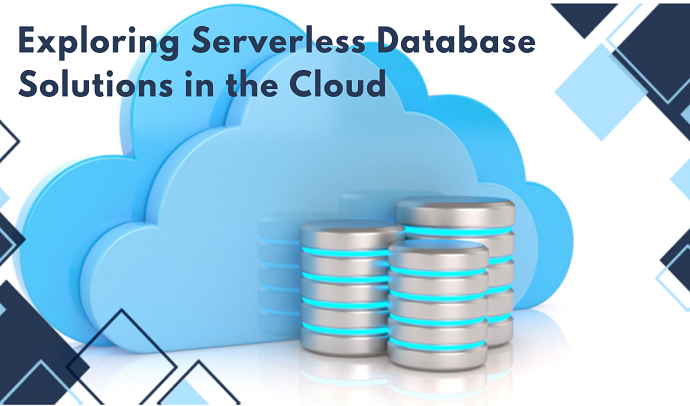Introduction
Serverless database solutions represent a significant evolution in the cloud computing landscape, offering a blend of agility, scalability, and efficiency that is transforming data management paradigms. These databases enable organizations to focus on their core business activities by abstracting and automating many of the complexities associated with traditional database management.Explore how these cutting-edge technologies are revolutionizing the landscape of data management.

1. Serverless Database: A Paradigm Shift
In the ever-evolving landscape of cloud computing, serverless database solutions represent a paradigm shift. Unlike traditional databases that require infrastructure provisioning and management, serverless databases abstract away the complexities of server management, enabling organizations to focus on innovation rather than infrastructure maintenance. With serverless databases, resources are provisioned dynamically based on workload demands, offering unparalleled scalability and cost-efficiency.
2. Key Features and Benefits
Serverless database solutions offer a host of features and benefits, including:

3. Leading Serverless Database Platforms
Explore leading serverless database platforms such as:
Amazon Aurora Serverless: Amazon Aurora Serverless is a fully managed, on-demand relational database service offered by AWS. It automatically scales compute capacity based on workload demands, providing high availability and durability for mission-critical applications.
Google Cloud Firestore: Google Cloud Firestore is a serverless, NoSQL document database service offered by Google Cloud Platform. It enables developers to build scalable, real-time applications with ease, offering automatic scaling and seamless integration with other Google Cloud services.
Microsoft Azure Cosmos DB: Microsoft Azure Cosmos DB is a globally distributed, multi-model database service offered by Microsoft Azure. It provides comprehensive support for NoSQL data models, including document, key-value, graph, and column-family, and offers automatic scaling and low-latency data access.
4. Use Cases and Applications
Serverless database solutions find applications across various industries and use cases, including:
Web and Mobile Applications: Serverless databases power web and mobile applications with dynamic workloads, providing scalability and performance to meet user demands.
IoT and Sensor Data Processing: Serverless databases are well- suited for processing and analyzing large volumes of IoT and sensor data in real-time, enabling organizations to derive actionable insights and make informed decisions.
Gaming and E-commerce Platforms: Serverless databases support gaming and e-commerce platforms with fluctuating traffic patterns, ensuring reliable performance and seamless user experiences.
5. Best Practices and Considerations
To maximize the benefits of serverless database solutions, organizations should consider the following best practices:
Data Modeling: Design data models that are optimized for serverless architectures, considering factors such as data access patterns, scalability requirements, and performance optimizations.
Performance Optimization: Implement indexing, caching, and query optimization techniques to enhance performance and reduce latency in serverless database environments.
Security and Compliance: Implement robust security controls and compliance measures to protect sensitive data and ensure regulatory compliance in serverless database deployments.
Conclusion
Serverless database solutions offer unprecedented flexibility, scalability, and efficiency for modern cloud applications. By leveraging the features and benefits of serverless databases, organizations can accelerate innovation, reduce costs, and drive business success in the cloud.
Stay tuned for more insights from CloudOpty as we continue to explore the latest innovations in cloud technology. Know more at www.cloudopty.com
